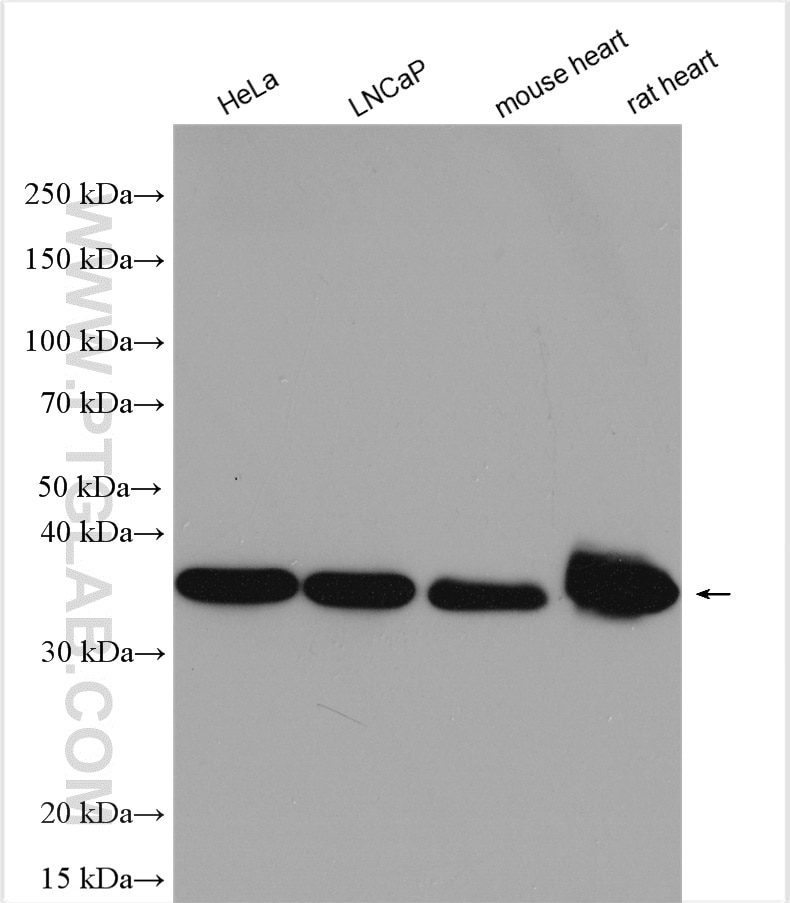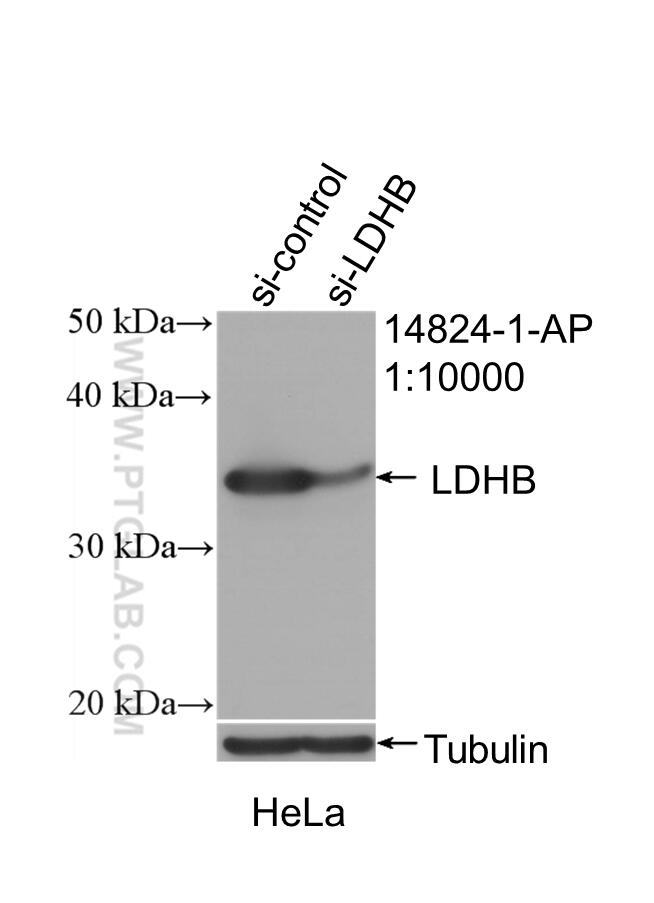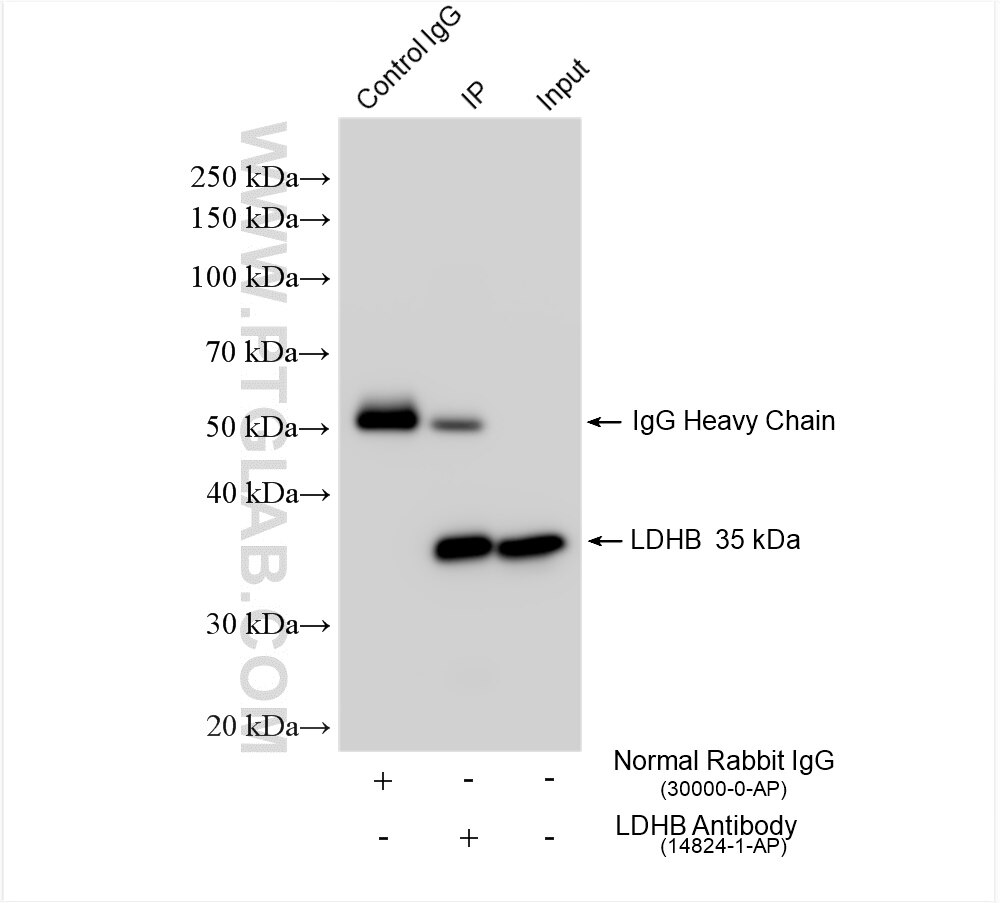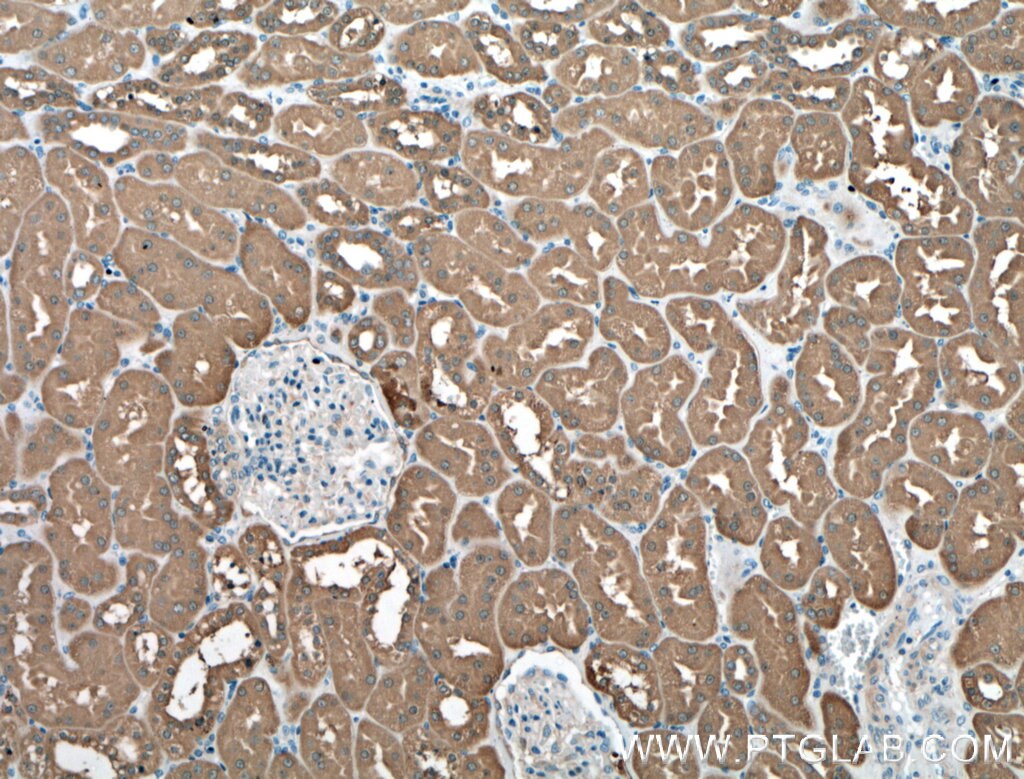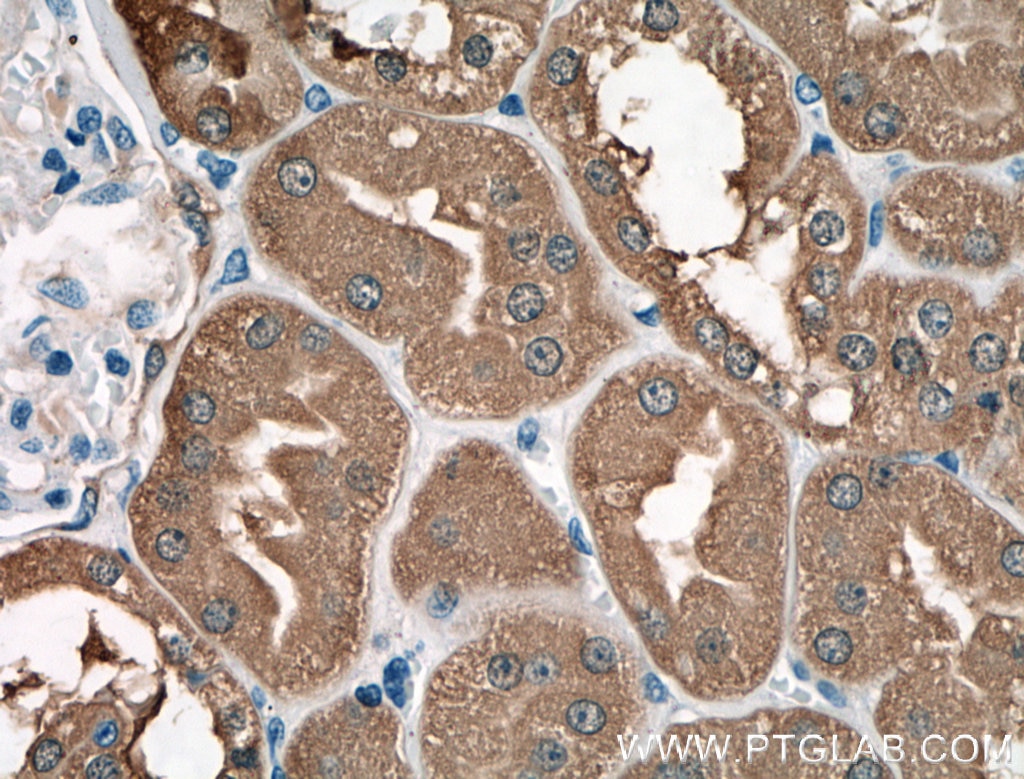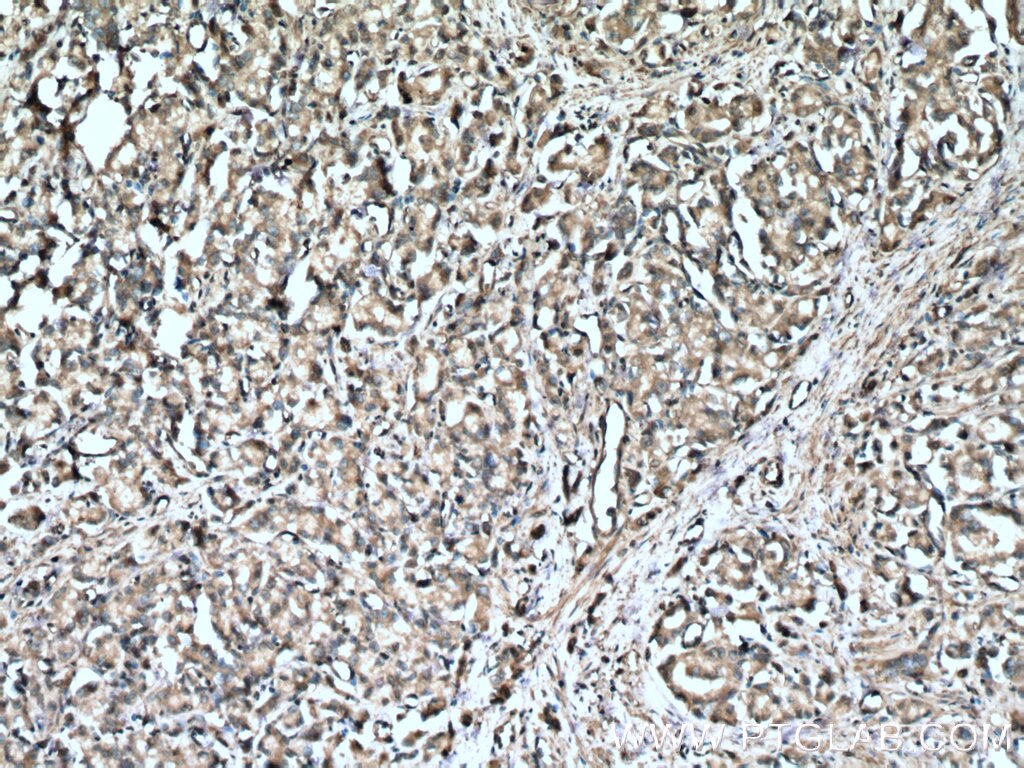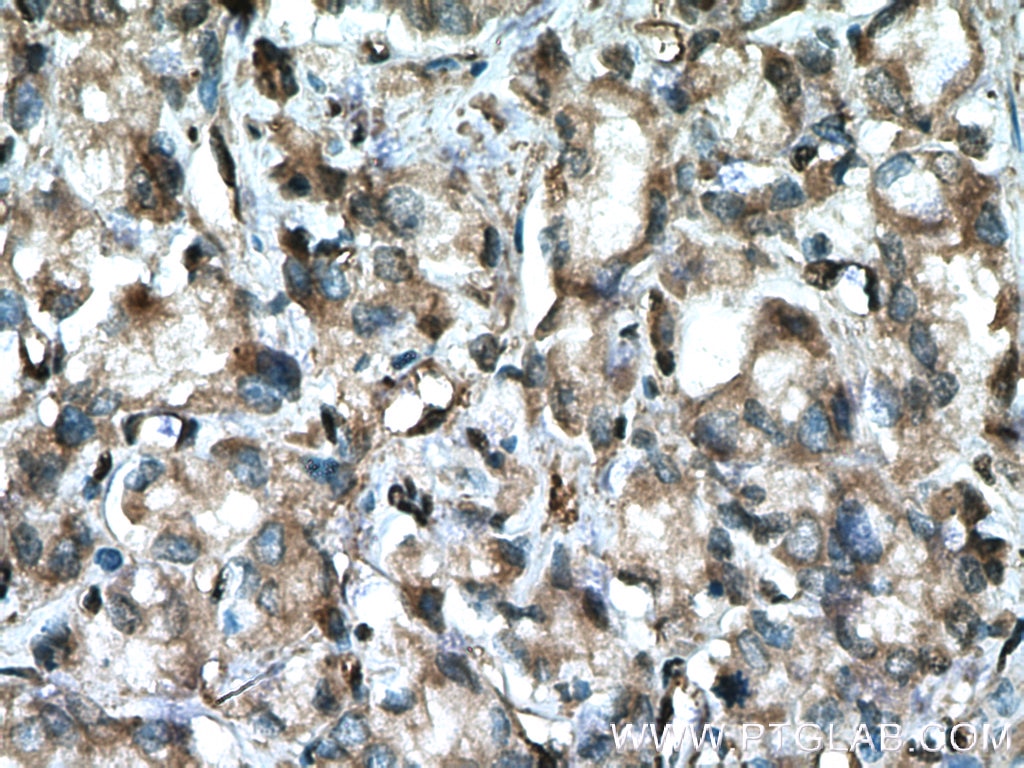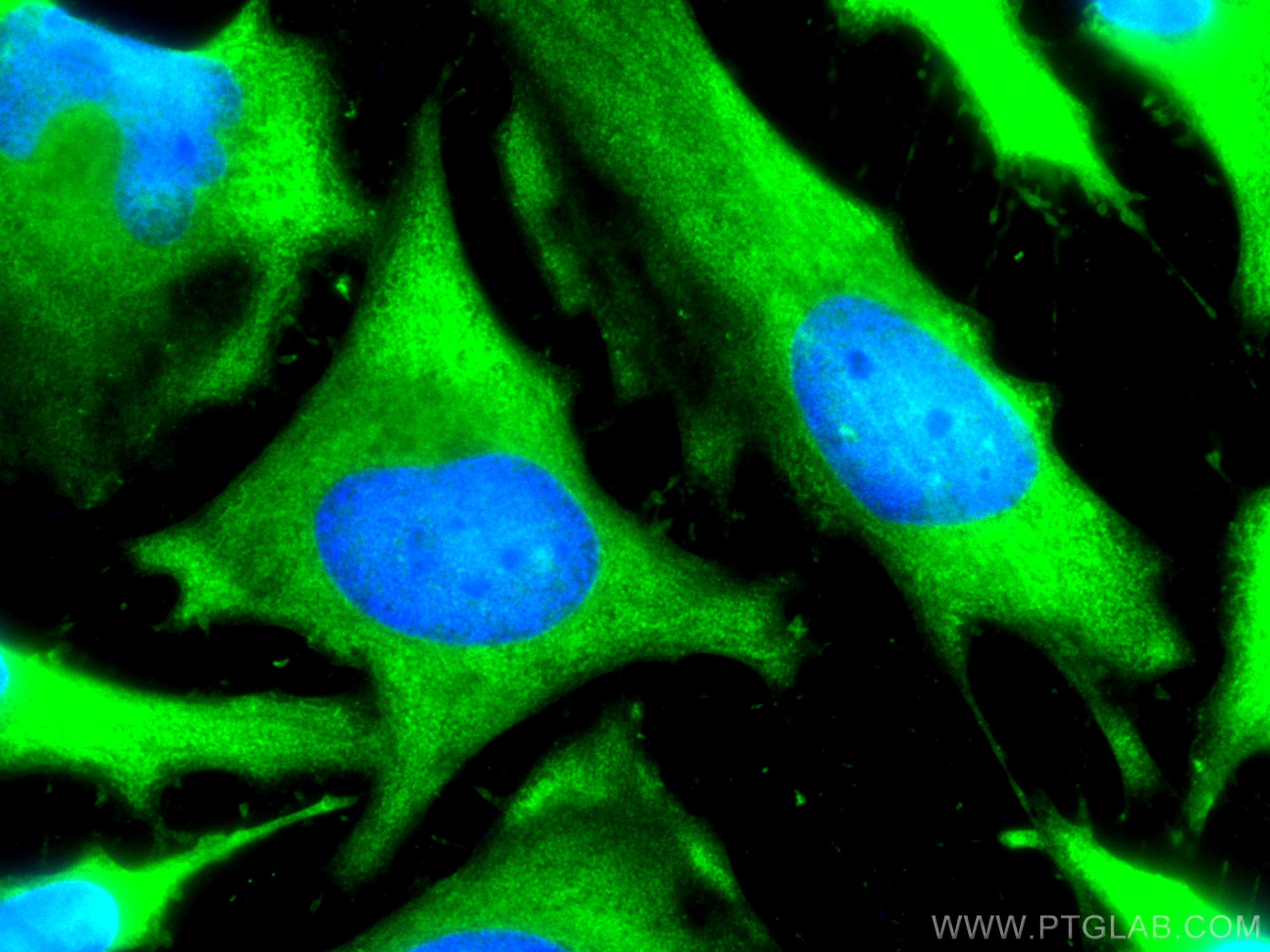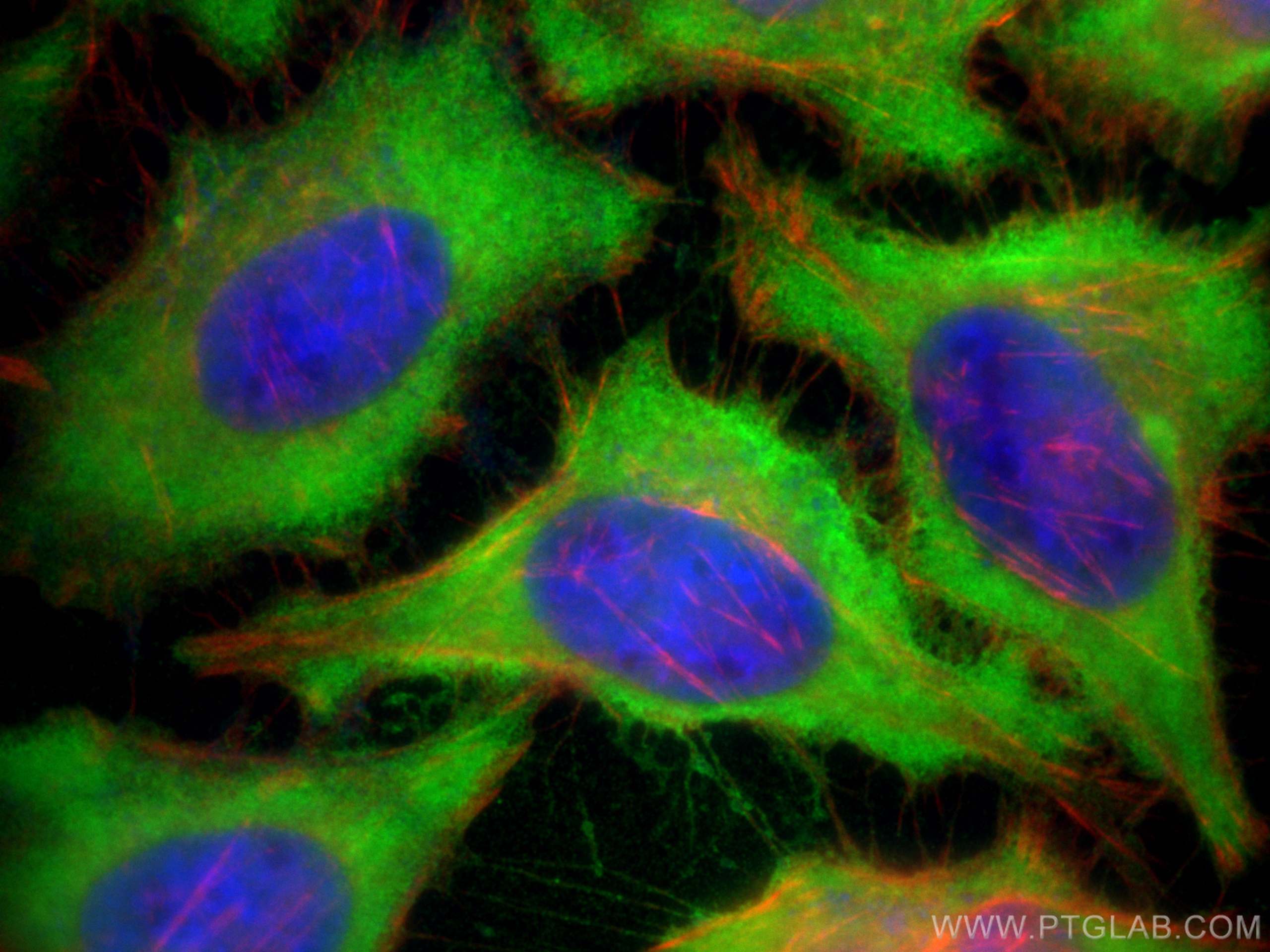- Featured Product
- KD/KO Validated
LDHB Polyklonaler Antikörper
LDHB Polyklonal Antikörper für WB, IHC, IF/ICC, IP, ELISA
Wirt / Isotyp
Kaninchen / IgG
Getestete Reaktivität
human, Maus, Ratte und mehr (3)
Anwendung
WB, IHC, IF/ICC, IP, ELISA
Konjugation
Unkonjugiert
Kat-Nr. : 14824-1-AP
Synonyme
Geprüfte Anwendungen
| Erfolgreiche Detektion in WB | HeLa-Zellen, DU 145-Zellen, Mausherzgewebe, Rattenherzgewebe |
| Erfolgreiche IP | Maushirngewebe |
| Erfolgreiche Detektion in IHC | humanes Nierengewebe, humanes Prostatakarzinomgewebe Hinweis: Antigendemaskierung mit TE-Puffer pH 9,0 empfohlen. (*) Wahlweise kann die Antigendemaskierung auch mit Citratpuffer pH 6,0 erfolgen. |
| Erfolgreiche Detektion in IF/ICC | HeLa-Zellen |
Empfohlene Verdünnung
| Anwendung | Verdünnung |
|---|---|
| Western Blot (WB) | WB : 1:5000-1:50000 |
| Immunpräzipitation (IP) | IP : 0.5-4.0 ug for 1.0-3.0 mg of total protein lysate |
| Immunhistochemie (IHC) | IHC : 1:400-1:1500 |
| Immunfluoreszenz (IF)/ICC | IF/ICC : 1:50-1:500 |
| It is recommended that this reagent should be titrated in each testing system to obtain optimal results. | |
| Sample-dependent, check data in validation data gallery | |
Veröffentlichte Anwendungen
| KD/KO | See 4 publications below |
| WB | See 60 publications below |
| IHC | See 9 publications below |
| IF | See 9 publications below |
| IP | See 1 publications below |
Produktinformation
14824-1-AP bindet in WB, IHC, IF/ICC, IP, ELISA LDHB und zeigt Reaktivität mit human, Maus, Ratten
| Getestete Reaktivität | human, Maus, Ratte |
| In Publikationen genannte Reaktivität | human, Hausschwein, Huhn, Maus, Ratte, Rind |
| Wirt / Isotyp | Kaninchen / IgG |
| Klonalität | Polyklonal |
| Typ | Antikörper |
| Immunogen | LDHB fusion protein Ag6605 |
| Vollständiger Name | lactate dehydrogenase B |
| Berechnetes Molekulargewicht | 36 kDa |
| Beobachtetes Molekulargewicht | 35 kDa |
| GenBank-Zugangsnummer | BC002362 |
| Gene symbol | LDHB |
| Gene ID (NCBI) | 3945 |
| Konjugation | Unkonjugiert |
| Form | Liquid |
| Reinigungsmethode | Antigen-Affinitätsreinigung |
| Lagerungspuffer | PBS with 0.02% sodium azide and 50% glycerol |
| Lagerungsbedingungen | Bei -20°C lagern. Nach dem Versand ein Jahr lang stabil Aliquotieren ist bei -20oC Lagerung nicht notwendig. 20ul Größen enthalten 0,1% BSA. |
Hintergrundinformationen
LDHB, also named as LDH-H and NY-REN-46, belongs to the LDH/MDH superfamily. And LDH family. It is an enzyme which catalyzes the reversible conversion of pyruvate and NADH to lactate and NAD+ in the glycolytic pathway. LDH comprises LDHA and LDHB, two subunits that are encoded by independent genes. In muscle or liver, most of the LDH is composed of four LDHA subunits, and preferably catalyzes the reduction of pyruvate to lactate. In heart and brain, LDH is mainly composed of four LDHB subunits, and predominantly catalyzes the oxidation of lactate to pyruvate. In other tissues, LDH is composed of both LDHA and LDHB. (PMID: 26269128, 31804482)
Protokolle
| PRODUKTSPEZIFISCHE PROTOKOLLE | |
|---|---|
| WB protocol for LDHB antibody 14824-1-AP | Protokoll herunterladen |
| IHC protocol for LDHB antibody 14824-1-AP | Protokoll herunterladenl |
| IF protocol for LDHB antibody 14824-1-AP | Protokoll herunterladen |
| IP protocol for LDHB antibody 14824-1-AP | Protokoll herunterladen |
| STANDARD-PROTOKOLLE | |
|---|---|
| Klicken Sie hier, um unsere Standardprotokolle anzuzeigen |
Publikationen
| Species | Application | Title |
|---|---|---|
Nat Methods A large-scale targeted proteomics assay resource based on an in vitro human proteome. | ||
Nucleic Acids Res Histone lactylation-boosted ALKBH3 potentiates tumor progression and diminished promyelocytic leukemia protein nuclear condensates by m1A demethylation of SP100A | ||
Nat Commun Enhancement of anaerobic glycolysis - a role of PGC-1α4 in resistance exercise. | ||
Nat Commun Interactome analysis reveals that lncRNA HULC promotes aerobic glycolysis through LDHA and PKM2. | ||
Nat Commun LDHA-mediated ROS generation in chondrocytes is a potential therapeutic target for osteoarthritis. |
